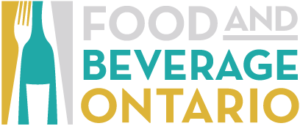 Food and Beverage Ontario (FBO) will host a consultation between food and beverage manufacturers on April 27 to define what is needed to improve the province’s business environment. It will bring together start-up, small, medium and multi-national businesses from across all segments of the food and beverage sector.
Food and Beverage Ontario (FBO) will host a consultation between food and beverage manufacturers on April 27 to define what is needed to improve the province’s business environment. It will bring together start-up, small, medium and multi-national businesses from across all segments of the food and beverage sector.
“As a small, family-run company started in 1983 we have experienced first-hand the ups and downs of operating a food business in Ontario,” says Will Rootham of Rootham Gourmet Preserves. “Connecting with other processor businesses to discuss what we need for success is an important step to communicating those needs to the provincial government.”
FBO will collect input from businesses on their priorities with respect to regulatory reform, R&D and innovation, market and trade development, skills gaps and workforce, environmental sustainability and the next Agricultural Policy Framework (2018 – 2023). The focus is on understanding what steps must be taken to foster a strong business growth environment for Ontario food and beverage manufacturers.
“Since the previous economic impact study completed by Food and Beverage Ontario in 2012, the sector’s total output, GDP and government tax revenues increased by approximately 3 per cent,” says Norm Beal, CEO of FBO. “I am sorry to say, but this is really lackluster growth given the nominal GDP in Ontario increased 12 percent during the same time period. We are the number one employer in the province so why aren’t we performing better? Processors from across Ontario will be wrestling with this issue on April 27.”
Facts at a Glance
Recent economic analysis completed by FBO using the most current 2015 statistics has provided insight on the state of the industry and the economic impact of Ontario’s 3,800 food and beverage manufacturing businesses.
- Approximately $71.8 billion in total output, consisting of direct output of $42.0 billion, indirect output of $24.5 billion and induced output of $5.2 billion.
- Approximately $28.5 billion in total GDP, consisting of direct GDP of $13.6 billion, indirect GDP of $10.7 billion, and induced GDP of $4.2 billion.
- Approximately 387,786 total full time equivalent (FTE) positions, consisting of 139,549 direct FTEs, 174,600 indirect FTEs, and 73,637 induced FTEs.
- Approximately $5.6 billion in total federal, provincial, and municipal tax revenue, consisting of direct tax revenue of $2.6 billion, indirect tax revenue of $2.2 billion, and induced tax revenue of $890.0 million.
Read the full release here.
 Canadian Food Business
Canadian Food Business
